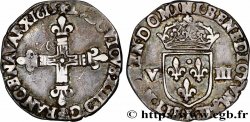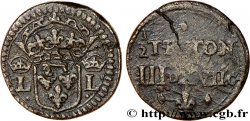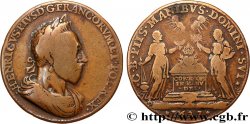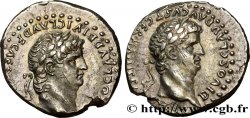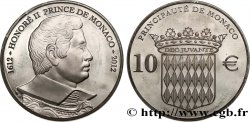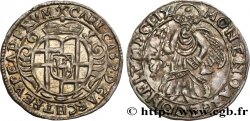Live auction - bry_490860 - LOUIS XIII Double louis d'or aux huit L (effigie de Jean Warin) 1640 Paris, Monnaie du Louvre
You must signin and be an approved bidder to bid, LOGIN TO BID. Accounts are subject to approval and the approval process takes place within 48 hours. Do not wait until the day a sale closes to register. Clicking on "BID" constitutes acceptance of the terms of use of cgb.fr private live auctions.
Bids must be placed in whole Euro amounts only. The sale will start closing at the time stated on the item description; any bids received at the site after the closing time will not be executed. Transmission times may vary and bids could be rejected if you wait until the last second. For further information check the Live auction FAQ
All winning bids are subject to a 18% buyer’s fee.
All winning bids are subject to a 18% buyer’s fee.
| Estimate : | 5 000 € |
| Price : | 3 300 € |
| Maximum bid : | 3 401 € |
| End of the sale : | 04 December 2018 15:45:09 |
| bidders : | 2 bidders |
Type : Double louis d'or aux huit L (effigie de Jean Warin)
Date: 1640 2e
Mint name / Town : Paris, Monnaie du Louvre
Quantity minted : 431911
Metal : gold
Millesimal fineness : 917 ‰
Diameter : 28,5 mm
Orientation dies : 6 h.
Weight : 13,46 g.
Rarity : R2
Coments on the condition:
Ce double louis est frappé sur un flan large et régulier. Exemplaire présentant une usure régulière, plus marquée au droit qu’au revers. Petit coup sur la tranche à 6 heures au droit et d’infimes coups dans les champs
Obverse
Obverse legend : LVD. XIII. D. G. - FR. ET. NAV. REX.
Obverse description : Tête laurée de Louis XIII à droite, avec la mèche longue, sans baie dans la couronne tenue par deux rubans ; au-dessous .1640..
Obverse translation : (Louis XIII, par la grâce de Dieu, roi de France et de Navarre).
Reverse
Reverse legend : .CHRS. - .REGN. - .VINC. - .IMP..
Reverse description : Croix formée de huit L adossées deux par deux couronnées, cantonnée de quatre lis, lettre d'atelier dans un cercle en cœur.
Reverse translation : (Le Christ règne, vainc et commande).
Commentary
Variété avec deux rubans à la base de la couronne.







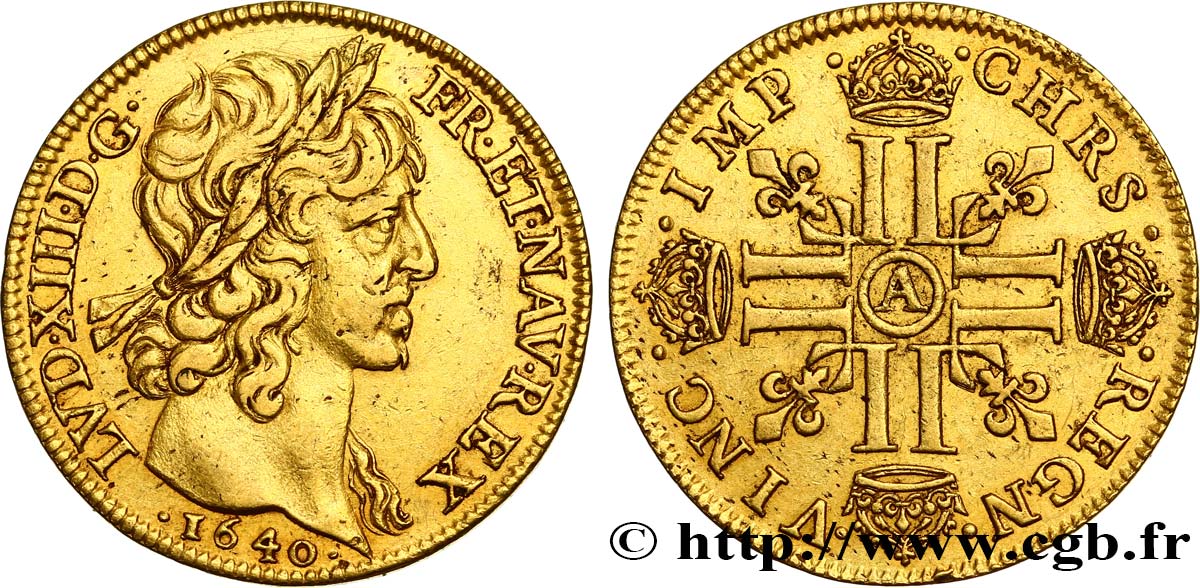
 Report a mistake
Report a mistake Print the page
Print the page Share my selection
Share my selection Ask a question
Ask a question Consign / sell
Consign / sell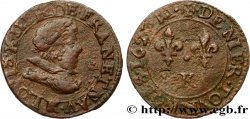
 Full data
Full data
